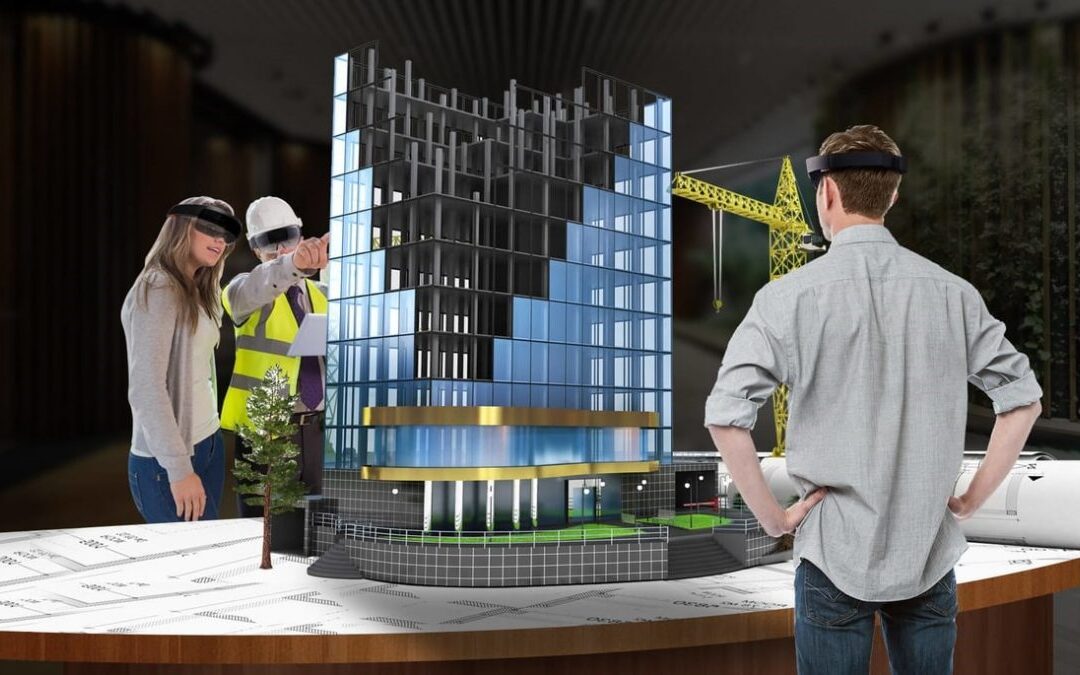In recent years, technology has revolutionized many industries, and construction is no exception. One of the most transformative technologies making waves in construction today is Virtual Reality (VR). While VR is often associated with gaming or entertainment, its practical applications are providing new ways for architects, builders, and clients to visualize and plan building projects in a far more immersive way.
A New Dimension for Building Design
Traditionally, architects and builders relied on blueprints and 3D models to communicate design ideas. These static images can sometimes be difficult to interpret, especially for those without a technical background. For clients or stakeholders unfamiliar with architectural jargon, it can be challenging to truly understand how a space will feel once constructed.
VR changes all of that by allowing users to experience a design in a fully immersive, interactive 3D environment. Instead of looking at flat images or 3D renderings on a screen, users can walk through a virtual representation of a building, exploring each room, hallway, and outdoor space in real-time. This level of immersion offers a deeper understanding of the design, layout, and proportions of a building, making it easier to see how it will function as a real-world space.
The Benefits of Virtual Reality in Construction
For construction professionals and clients alike, the advantages of VR are clear. Here are some of the most important ways VR is impacting the field:
1. Enhanced Visualization
With VR, clients can move beyond the limitations of traditional plans and visualize how a building will look and feel in a tangible way. Walking through a virtual version of the building allows them to better understand the layout, size, and flow of the space. They can see how the natural light enters a room, how furniture might fit, or how different materials and finishes will look in context.
2. Better Decision-Making
When clients and project teams can interact with a design in a VR environment, decisions become more informed. Seeing the space in three dimensions allows them to evaluate design choices like room sizes, layouts, or materials, and make real-time adjustments. This can lead to faster decision-making and fewer revisions once the building process begins, which can be critical for staying within budget and on schedule.
3. Early Problem Identification
One of the major benefits of VR in construction is the ability to identify potential problems before they become expensive issues on-site. By walking through the virtual space, clients and architects may spot design flaws, such as awkward layouts, spatial conflicts, or flow problems that would be difficult to notice in 2D renderings or even traditional 3D models. Catching these issues early can save time and money in the long run.
4. Improved Collaboration
Construction projects often involve many different stakeholders—architects, engineers, contractors, and clients. VR provides a shared platform where everyone can engage with the design in the same way. This fosters better communication and understanding between teams, ensuring that all parties are on the same page before construction begins. It can also help align the vision of the client with the technical feasibility of the project.
5. Increased Client Engagement
For clients, VR provides a more engaging and interactive way to be involved in the design process. Instead of simply reviewing plans or renderings, clients can “step into” their future building and see exactly what it will look like. This active engagement helps them make more confident decisions, feel more connected to the design, and gives them a clearer sense of ownership over the project.
Applications of VR in the Construction Process
VR’s role in construction is not limited to pre-construction design. As technology continues to advance, we’re seeing new applications throughout the building process:
- Design Revisions: If a client wants to tweak their design, they can quickly see how these changes will impact the space without waiting for new renderings or physical models.
- Training and Safety: VR can be used to train construction workers in simulated environments, helping them learn skills and safety procedures without the risks of on-site training.
- Project Walkthroughs: Before a project is completed, stakeholders can perform a full walkthrough in VR to ensure everything aligns with the original vision, catching any discrepancies before they become major issues.
- Marketing and Client Acquisition: Developers and builders can use VR to show potential clients virtual tours of properties or planned developments, giving them a better sense of the final product before they commit.
Looking to the Future
As VR technology becomes more accessible and advanced, its impact on the construction industry will continue to grow. The technology is evolving rapidly, and it’s likely that future applications will go beyond just visualizations to include real-time data integration, augmented reality (AR) for on-site assistance, and even AI-driven design suggestions.
In the coming years, it’s not hard to imagine a world where construction projects are planned entirely in virtual environments, with every detail tested and optimized before breaking ground. The possibilities are endless.
Conclusion
Virtual Reality is helping construction professionals and clients alike to visualize and plan with greater clarity, reduce errors, and make more informed decisions. Its ability to bring designs to life in immersive 3D is transforming the construction industry by offering new levels of precision, collaboration, and engagement. Whether you’re an architect, builder, or client, VR offers a glimpse into a future where construction projects are more efficient, transparent, and cost-effective.


Recent Comments